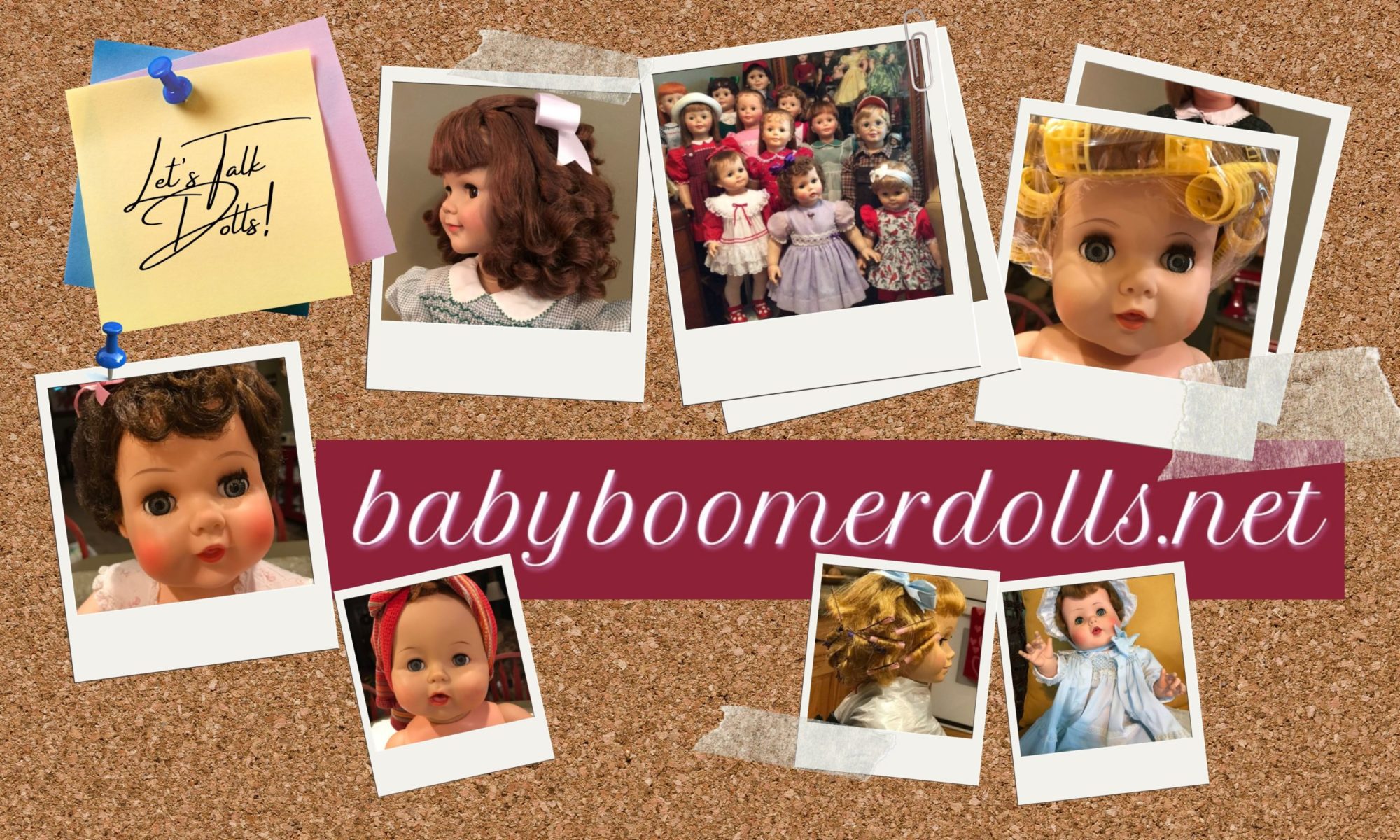“Let’s Talk Dolls”…. Today let’s talk about an old favorite…Raggedy Ann.
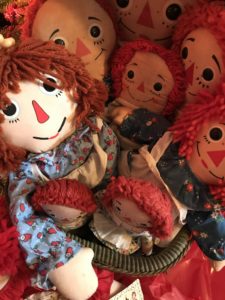
I love dolls of all kinds and all sizes. I will say, however, that Raggedy Ann is one of my favorites. I think that is because she’s soft and cuddly and almost indestructible. When you’re a little kid, that is important! LOL! Many of us remember the great pleasure a favorite doll gave us during childhood. With a doll, unlike almost any other object, there can be an emotional tie that carries through our lives. Many of us still have dolls from our childhoods.
Raggedy Ann has almost a timeless quality and has become a household name. She is made of soft, cuddly fabric. Her clothing is usually bright colors and she almost always wears a white apron and white pantaloons. She has on striped socks, and her hair is made from soft yarn. Most of us could draw her picture from memory. Can you think of any other doll that can make that claim? Everyone knows who Raggedy Ann is!
Cloth has been a traditional material for making dolls. Scraps of a sewing project, outgrown clothing, and other discards could easily be fashioned into a child’s toy by a mother or grandmother. Many rag dolls have long since been lost or loved to pieces, but the comfort a rag doll gives and the cuddly comfort she offers lives on in descendants such as Raggedy Ann.
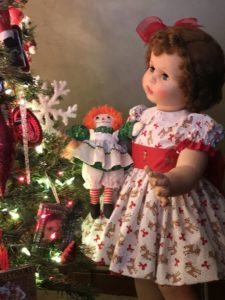
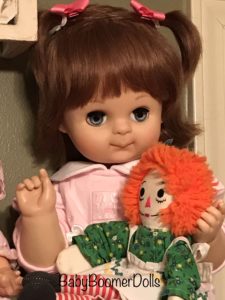
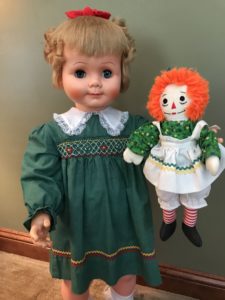
Raggedy Ann is arguably the most beloved doll of the twentieth century. She’s not glamorous. She doesn’t even have her own wardrobe! Her beginnings are shrouded in legend. Some stories say that Johnny Gruelle, an artist and the doll’s creator, found his mother’s old doll in the attic. He dusted off years of storage, painted a new face on the old faded one and presented the doll to his daughter, Marcella.
On Christmas Eve, 1880, Gruelle was born in Illinois. He grew to be an astute businessman and registered Raggedy Ann as a trademark as early as 1915. The doll’s name was culled from two characters of the times – The Raggedy Man and Little Orphan Annie.
In 1916, Marcella died at the age of fourteen. Gruelle’s book, Raggedy Ann Stories, inspired by her devotion to the new old doll was published two years later. From the start, children wanted a Raggedy Ann of their own. It is believed that the first dolls were made by members of the Gruelle family. Eventually, demand overran production and commercial mass production of the beloved doll began.
The early Raggedy Anns have a brownish hair rather than the red hair that most of us recognize. Sixteen inches tall seems to have been the most common size, but the doll may have been made in other sizes also. It is said that the earliest of dolls, those made by the family, had candy hearts with “I Love You”printed on them like the doll heroine in the book.
In 1920, Raggedy Ann’s brother, Raggedy Andy entered the scene. The Raggedy doll’s popularity was not regulated to the children’s nursery. No one could resist the Raggedys. There were greeting cards, games, paper dolls, and even even a fox-trot called the Raggedy Ann.
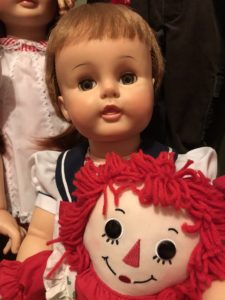
Raggedy Ann began to range in height from 12 inches to more than 30 inches. During the 1940s, McCall’s Pattern Company was licensed to market do-it-yourself patterns for Raggedy Ann and Andy. This resulted in an abundance of homemade Raggedys during the late 1940s and 1950s. Since the 1960s, Knickerbocker Toy Company, Applause Toy Company, and Hasbro have all produced the Raggedy dolls, all ensuring that after all these years, Raggedy Ann and Andy will continue to delight both children and adults alike.
I hope you have enjoyed this brief genealogy lesson on Raggedy Ann! Until we are together again to talk dolls…stay well.
Hugs,
Lynn
